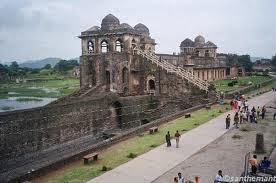Chevrolet Tavera
No, you cannot call it a bread-box on wheels. As a matter of fact, it is far from it! The Tavera is surely a good-looking machine that fits the ‘people-mover’ tag perfectly. But since the introduction of the Innova, things have not been going well for her. What it essentially has done is fill the space left by the Toyota Qualis. The Innova is quite expensive and there’s no other machine that falls in the same space as the Qualis, so the Tavera has more than filled up that space and has been doing rather well.
The Tavera is strictly a MUV and the body-on-frame layout hints at the age-old underpinnings that have been made use of. The suspension was specially optimized for India and does a great job of absorbing whatever is thrown at it. The ride, though not exactly cushy, is quite pliant. Handling is the weak area of the Tavera but then again, it is a car that will not be driven with your mad-hat on. For normal use, it is just fine and the body roll is well controlled. The high speed stability is also commendable. Brakes however are something that Chevrolet should look into as they feel soggy and you have to really press them hard to feel the discs working.
The interior is not really high-class but for the purpose that the Tavera sells, the interior is a job well done. It can stand the punishment of Indian conditions and will go on without rattling for as long as you want it to. The 2.5-litre direct injection diesel engine is an Isuzu unit and it is quite a workhorse! Peak power of 80bhp comes in at 3900 rpm while 186Nm of torque peaks at 1800 revs. But the way the engine pulls from low revs is astonishing and the torque curve is very linear. This makes driving around town a breeze.
The Chevy Tavera is not about performance or zero-to-hundred times. It is more about lugging capacity and the Tavera does that well. Essentially an Isuzu Panther, the Tavera is the perfect MUV for suburban places and for people who are not inclined towards the Innova owing to its asking
Dewas has many industrial units providing employment to thousands of industrial workers. It has some industrial areas on Indore road and also few pockets of industries on Ujjain road.
Dewas t has many mid-sized and small industries. The largest companies include Tatas, Kirloskers, Arvind Mills, S Kumars, Tata - Cummins, Gajra Gears,Gabriel India Ltd, Ranbaxy Labs, Steel Tubes and the Bank Note press. The rapid industrialization took place in the late 70s and early 80s, but due to inadequate infrastructure, the pace has been slower since the late 80s. There are still large companies delivering substantial profits however. Dewas is known as the Soya capital of India and is a major part of the soya bean processing industry in the country.
In recent years, some industries have closed their operations due to a shortage of sufficient infrastructure to support growth. The main factor is the shortage of water as the water table has significantly reduced due to excessive usage in previous decades.
Due to its high location above mean sea level and at one corner of plateau, constant wind flows in the region making it perfectly suited for harvesting wind energy. MP wind farms have chosen an ideal location for planting more than 100 huge monster like wind mills on a hill some 13 km from Dewas. It generates around 15 megawatts of power. A few private companies have financed these to get uninterrupted power supply.


















